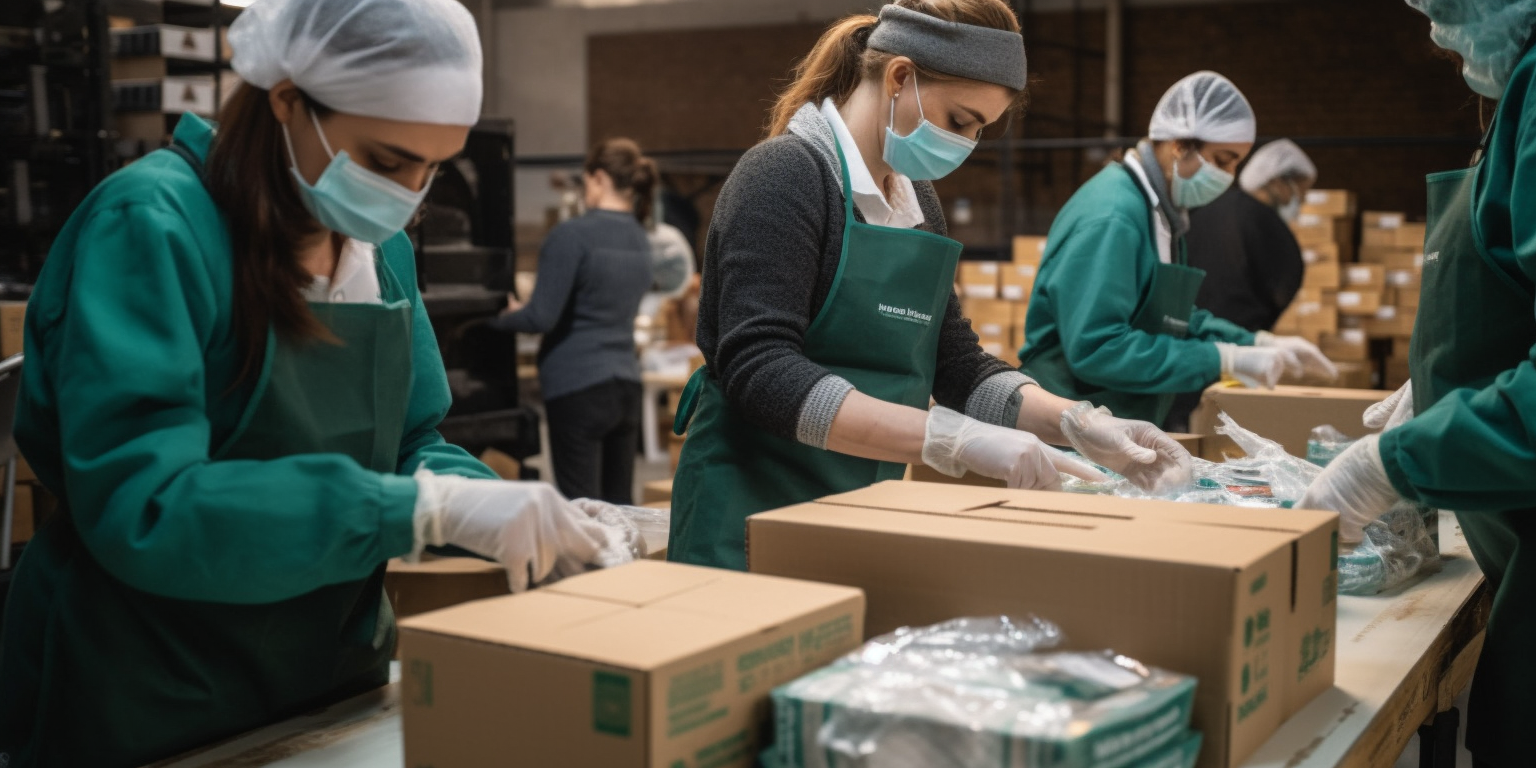
From Garden to Table: Growing and Preserving Your Own Emergency Food
From Garden to Table: Growing and Preserving Your Own Emergency Food
Introduction: The Importance of Emergency Food
With the uncertainty of the past few years, many of us have been thinking about the importance of being prepared for emergencies. One of the most basic needs in any emergency situation is food. Having a supply of non-perishable, nutrient-dense food on hand can mean the difference between going hungry and staying healthy during a crisis.
But relying solely on store-bought canned goods and packaged snacks can be expensive and limiting. That's where growing and preserving your own emergency food comes in. Not only is it cost-effective, but it also allows you to tailor your supply to your specific dietary needs and preferences.
Starting Your Own Garden: Tips and Tricks
If you're new to gardening, the idea of starting your own vegetable patch can be daunting. However, with a little bit of planning and preparation, anyone can grow their own produce. Here are a few tips to get you started:
-
Start small: Don't overwhelm yourself by trying to grow too many things at once. Begin with a few easy-to-grow vegetables like tomatoes, beans, and zucchini.
-
Choose the right location: Most vegetables need at least six hours of sunlight per day, so choose a sunny spot in your garden. Make sure the soil is well-draining and rich in nutrients.
-
Invest in quality tools: A good pair of gloves, a hoe, and a trowel are essential for any gardener. Investing in high-quality tools will save you time and money in the long run.
Choosing the Right Vegetables and Fruits to Grow for Emergency Food
When choosing which vegetables and fruits to grow for emergency food, it's important to consider a few factors. First, choose crops that are high in nutrients and have a long shelf life. Second, consider the amount of space and sunlight you have available. Here are a few suggestions for crops that are well-suited to emergency food storage:
-
Tomatoes: Rich in vitamins A and C, tomatoes are a versatile crop that can be canned, frozen, or dehydrated for long-term storage.
-
Beans: High in protein and fibre, beans are an excellent crop for emergency food storage. They can be canned or dehydrated and stored for up to five years.
-
Apples: Apples are a great source of vitamin C and can be stored for up to six months in a cool, dark place. They can be canned, dried, or turned into applesauce for long-term storage.
Preserving Your Harvest: Canning, Freezing, and Dehydrating
Once you've harvested your vegetables and fruits, it's time to preserve them for long-term storage. Here are three popular methods of food preservation:
-
Canning: Canning involves cooking the food and sealing it in a jar with a vacuum-sealed lid. This method is best for low-acid foods like beans, tomatoes, and soups.
-
Freezing: Freezing is the simplest and most convenient method of food preservation. Vegetables and fruits can be blanched (boiled briefly) before being frozen to preserve their nutrients and flavour.
-
Dehydrating: Dehydrating involves removing the moisture from the food, which prevents the growth of bacteria and mould. Dehydrated fruits and vegetables can be stored for up to a year.
Building a Pantry: Storing and Organizing Your Emergency Food
Once you've preserved your harvest, it's time to build your pantry. Make sure to store your food in a cool, dry place away from direct sunlight. Here are a few tips for organizing your pantry:
- Label everything: Make sure to label each jar or container with the date and contents of the food. This will make it easier to keep track of what you have and when it was preserved.
- Rotate your stock: As you add new items to your pantry, make sure to rotate the older items to the front so they get used first.
- Keep an inventory: Keep a list of everything in your pantry so you know what you have and what you need to stock up on.
Making the Most of Your Emergency Food: Recipes and Meal Ideas
Just because you're relying on emergency food doesn't mean you have to sacrifice taste or variety. With a little creativity, you can make delicious and nutritious meals using your stored food. Here are a few recipe ideas:
-
Minestrone soup: Combine canned tomatoes, beans, and pasta with dried herbs and spices for a hearty and nutritious soup.
-
Vegetable stir-fry: Use frozen or dehydrated vegetables to create a flavourful stir-fry. Add protein like canned chicken or tofu for a complete meal.
-
Fruit smoothie: Blend together canned or frozen fruits with milk or yogurt for a refreshing and nutritious smoothie.
Conclusion: The Benefits of Growing and Preserving Your Own Emergency Food
Growing and preserving your own emergency food has numerous benefits. Not only is it cost-effective, but it also allows you to tailor your food supply to your specific dietary needs and preferences. Additionally, gardening is a great way to get outside and connect with nature, and preserving your own food is a useful skill that can come in handy in many different situations.
According to a recent survey by the Royal Horticultural Society, 52% of people in the UK started growing their own food during the pandemic. With the uncertainties of the future, it's clear that more people are realizing the importance of being self-sufficient when it comes to food.
By starting your own garden, choosing the right crops, and preserving your harvest, you can ensure that you and your family have a supply of nutritious food in case of an emergency. So why not give it a try? You might be surprised at how satisfying it is to eat food that you've grown and preserved yourself.
Suggested Articles
Emergency Food Supply for Multi-Day Power Outages: A Comprehensive Guide for UK Residents
Power outages can strike at any time, and with an increasing demand for electricity and a more volatile climate, the ...
The Role of Emergency Food in Pandemic Preparedness: Lessons from COVID-19
The COVID-19 pandemic has laid bare the vulnerabilities of our global food supply chains and has demonstrated the nee...
Preparing for the Worst: The Top Emergencies That Require a Food Supply
As the saying goes, hope for the best but prepare for the worst. In the UK, emergencies can come in many forms, from ...




